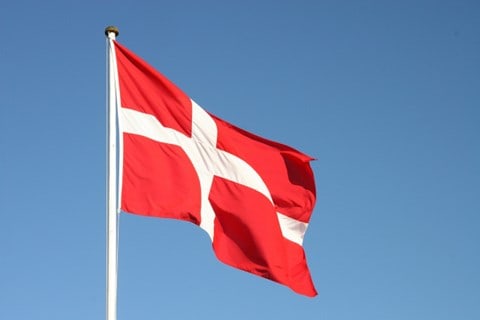If you’re looking for wedding traditions with boundless joy and family spirit, then look no further than Denmark, one of the happiest countries on Earth. This humble Scandinavian gem has a delightful trove of romantic and family-oriented wedding traditions to explore.
Some notable Danish wedding traditions are the Gate of Honor (Æresport) and the Bridal Waltz (Brudeval). Many other wonderful Danish wedding traditions and customs exist, all cherishing the bride and groom’s familial bonds and celebrating Denmark’s cultural heritage.
Although Danish wedding traditions mainly focus on family and culture, they harmonize this family orientation with the bride and groom’s romance and loyalty. Thus, for anyone seeking the right balance between the lucky couple and their loving families, consider these heartwarming Danish wedding traditions:
12 Lovely Danish Wedding Traditions

-
Pre-Wedding Night
Before the wedding day, it’s a Danish wedding tradition for the bride and groom to be completely separate.
Instead of staying together in one place (especially if they already live together), they each will stay in the homes of their respective families, where their relatives and friends will help them get ready for their wedding day.
The bride and groom will remain separate until their wedding ceremony when they will meet again as if for the first time, but this time looking at each other from across the wedding aisle!
-
Asking for the Bride’s Hand
In this old-fashioned Danish wedding tradition, the groom gives due respect to the bride’s father by asking him for his daughter’s hand.
This act shows goodwill between the groom and the bride’s father, who is traditionally the head of the family in Danish culture. If the bride’s father approves of the groom, then the groom rejoices because this means the bride’s family wholeheartedly accepts him!
-
The Wedding Dress
-
Bridal Shoes
Danish wedding traditions give special treatment to the bride’s shoes. That is, the bride selects and purchases the shoes herself, usually with the advice of her friends and close female relatives.
After the wedding, the bridal shoes are never sold. Instead, they are kept as precious heirlooms and mementos of the wedding day.
-
The Æresport, or the Gate of Honor
Friends and family of the couple come together before the wedding day to build the Gate of Honor, customarily decorating it with flowers, leaves, and pine or spruce branches. They can also decorate it with various other items, such as items related to the life of the bride and groom!
-
Rice Throwing
Similar to Croatian customs, Danish wedding traditions view rice as a symbol of fertility and life. Hence, the bride and groom’s friends and family throw rice over the newlywed couple as they leave their wedding ceremony. This shows hope and anticipation for the newlywed couple’s future children!
-
Unique Wedding Cakes: Kransekage and Overflødighedshorn
In Danish wedding tradition, there are two special wedding cakes, which are the Kransekage and the Overflødighedshorn.
Kransekage
Overflødighedshorn (The Horn of Plenty)
-
Cake Cutting
According to Danish wedding traditions, the couple should cut the wedding cake before midnight. Every guest must also be served a slice of the wedding cake. As Danish wedding cakes are traditionally quite large, there are often plenty of delicious slices to go around!
-
Plenty of Wedding Kisses
In this cute and romantic Danish wedding tradition, guests and family members compel the bride and the groom to kiss each other through various prompts and signals, both obvious and subtle.
For example, if friends and family tap their knives on their plates during the post-wedding dinner, then that means the newlyweds should kiss!
-
The Wedding Waltz: Brudeval
The Brudeval is a romantic wedding waltz done right before midnight. In this unique Danish wedding tradition, the newlywed couple’s families and guests form a circle around them, clapping and encouraging the bride and groom to dance.
This circle gradually becomes smaller, pressuring the newlyweds to get closer and closer together. Eventually, when the circle is small enough, the bride and groom kiss, much to the glee of their surrounding friends, family, and guests!
-
Tearing the Bride’s Veil
By the end of the Brudeval, the bride’s veil is cut and torn into ribbons. Going by Danish wedding traditions, this act represents the bride’s full transition into womanhood. She is now a married woman who no longer needs a bridal veil!
-
Cutting the Groom’s Sock’s Toes
Similar to the veil tearing, this unique Danish wedding tradition signifies the start of the groom’s life as a responsible married man. Moreover, this traditionally gives the bride her “first task” as a woman looking after her husband, which is to repair her new husband’s socks.
Final Thoughts
The most special aspect of Danish wedding traditions is the way they bring the bride and groom’s families together to celebrate their love and commitment. Thus, these traditions are a fantastic homage to Denmark’s robust collectively-oriented cultural heritage.
They also perfectly complement the fact that Denmark is the easiest country in Europe to get married (and consistently ranks as one of the happiest countries in the world).
Thus, if you’re a lovely couple who aims to have a destination wedding in Denmark or simply want to integrate family-oriented customs into your wedding, then Danish wedding traditions are an excellent choice.